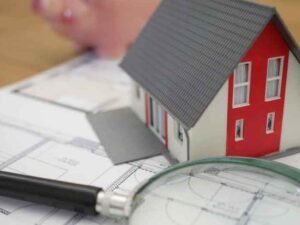Trees are a vital part of any landscape, providing shade, beauty, and environmental benefits that enhance both outdoor spaces and overall well-being. Maintaining the health of a tree requires more than just occasional watering or trimming, as hidden problems can develop over time and lead to serious damage if left unaddressed. Recognizing the signs that a tree is struggling can help prevent accidents, property damage, and loss of valuable greenery. We will explore the indicators that suggest a tree requires professional care, highlighting visible symptoms and underlying issues that often go unnoticed. Understanding these signs ensures that trees remain safe, healthy, and visually appealing for years to come.
Indicators Your Tree Needs Professional Attention
- Visible Decay or Hollow Areas
One of the clearest signs that a tree needs attention is the presence of decay or hollow sections in the trunk or major branches. Decay can appear as soft, crumbling wood, fungal growth, or cavities that penetrate the tree’s structure. These areas compromise the strength of the tree, increasing the risk of branches breaking or the entire tree falling during storms or high winds. While minor decay might not immediately threaten the tree’s survival, it indicates underlying issues such as disease, pest infestation, or environmental stress. Even if a tree appears healthy on the outside, hidden decay can be severe enough to necessitate intervention. Seeking professional tree service in Louisville, KY ensures that decay is properly assessed, and corrective measures, such as pruning or structural support, are implemented to prevent accidents and preserve the tree’s longevity.
- Unusual Leaf Changes
Changes in leaf color, texture, or growth patterns often signal that a tree is experiencing stress or illness. Leaves that suddenly turn yellow, brown, or display irregular spots can indicate nutrient deficiencies, disease, or pest activity. Premature leaf drop or reduced foliage density is another warning sign that a tree is struggling to maintain its normal functions. Seasonal changes alone do not account for these symptoms, and consistent abnormalities over several weeks should not be ignored. Leaf issues may stem from soil problems, root damage, or infestations that are not easily visible. By monitoring foliage closely and addressing abnormalities promptly, property owners can protect the tree’s overall health. A professional can diagnose the underlying cause and recommend treatments to restore vitality and prevent further deterioration.
- Cracks, Splits, or Structural Weakness
Cracks and splits in the trunk or main branches are serious indicators that a tree requires immediate attention. Structural weaknesses can result from environmental factors such as storms, heavy snow, or improper pruning, and may also develop from internal decay. Trees with significant cracks are at a high risk of branch failure, which can cause property damage, injuries, or even fatalities if not addressed promptly. Structural flaws are not always obvious, and some may exist within the core of the tree rather than on the exterior surface. Professional assessment allows for the identification of hidden weaknesses and provides solutions such as cabling, bracing, or selective pruning to reduce risk. Timely intervention protects both the tree and the surrounding property while maintaining safety.
- Fungal Growth or Mushroom Presence
The appearance of fungi or mushrooms around the base of a tree or on its trunk is a strong indication that internal decay is occurring. Fungi feed on weakened or dead wood, often compromising the structural integrity of the tree. While some fungi are harmless, many types signal advanced decay that requires immediate attention. Ignoring fungal growth can lead to sudden branch collapse or the eventual failure of the entire tree. The presence of fungi is typically accompanied by other symptoms, such as soft spots, cracking bark, or leaf discoloration. Professional evaluation is crucial to determine the extent of damage and recommend appropriate action, which may include removal of affected limbs, soil treatment, or, in severe cases, complete tree removal to ensure safety.
- Leaning or Shifting Trunk
A tree that suddenly begins to lean or shows a noticeable shift in its trunk orientation is a warning sign that the root system may be compromised. Root issues can result from soil erosion, waterlogging, pest damage, or mechanical injury, all of which destabilize the tree. Even a slight lean can escalate over time, especially under wind pressure or heavy foliage, increasing the likelihood of the tree toppling. Leaning trees near buildings, roads, or other structures pose a significant safety risk. Identifying the cause of the lean is essential to determine whether the tree can be stabilized or requires removal. Professional intervention ensures that corrective measures, such as cabling or root treatment, are applied accurately to prevent accidents while preserving the tree when possible.
- Dead or Dying Branches
Branches that are visibly dead, brittle, or devoid of leaves indicate that the tree is under stress and may be struggling to allocate resources properly. Dead branches not only detract from the tree’s appearance but also present hazards, as they can fall without warning during storms or high winds. The causes of branch dieback include disease, pest infestations, root damage, or environmental stressors like drought or soil compaction. Ignoring dead limbs can exacerbate the tree’s problems, leading to further decline and potential safety issues. Professional pruning removes dangerous branches, encourages healthy growth, and helps the tree redirect energy toward stronger, viable parts. Regular inspection and maintenance are essential to prevent extensive damage and maintain the overall stability of the tree.
Recognizing the signs that a tree requires professional attention is essential for maintaining both safety and aesthetic value in any landscape. Symptoms such as decay, unusual leaf patterns, structural damage, fungal growth, leaning, dead branches, excessive sap, stunted growth, and insect infestations all indicate underlying issues that need to be addressed promptly. Ignoring these warning signs can lead to hazardous conditions, property damage, and even the loss of the tree. Regular monitoring, timely intervention, and appropriate care ensure that trees remain healthy, resilient, and visually appealing for years to come, safeguarding both the environment and the people around them.










